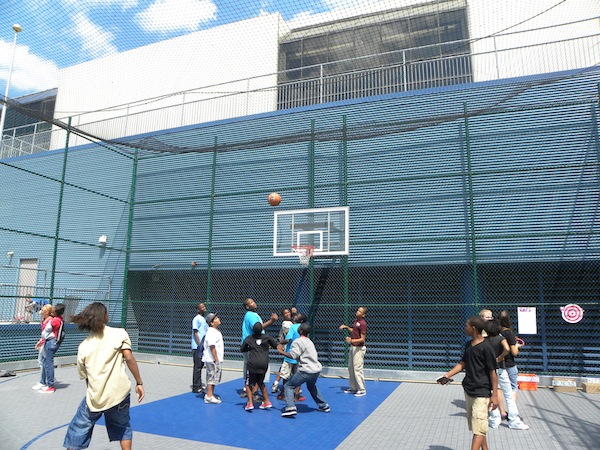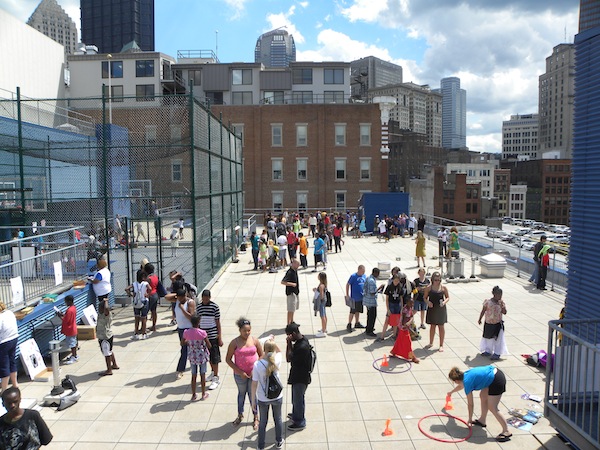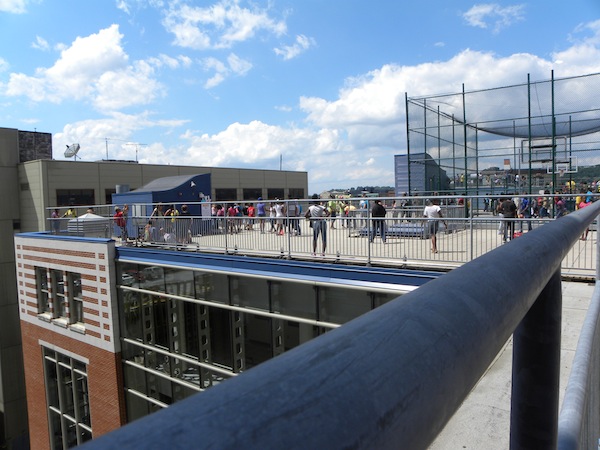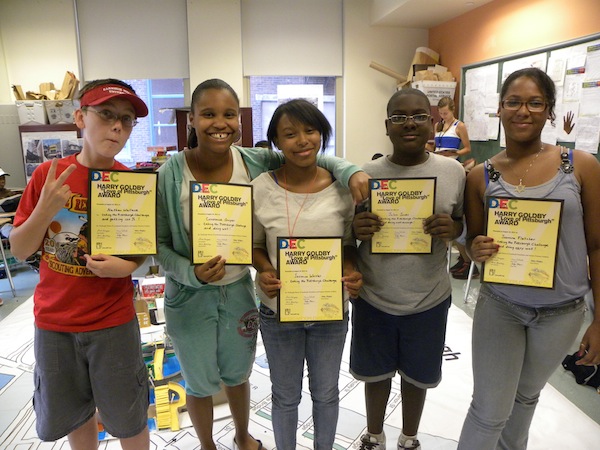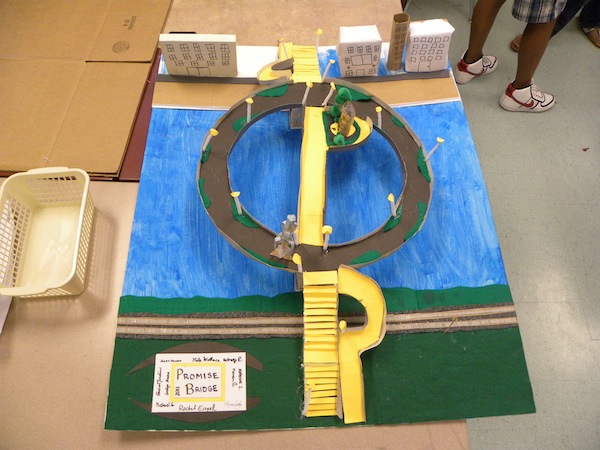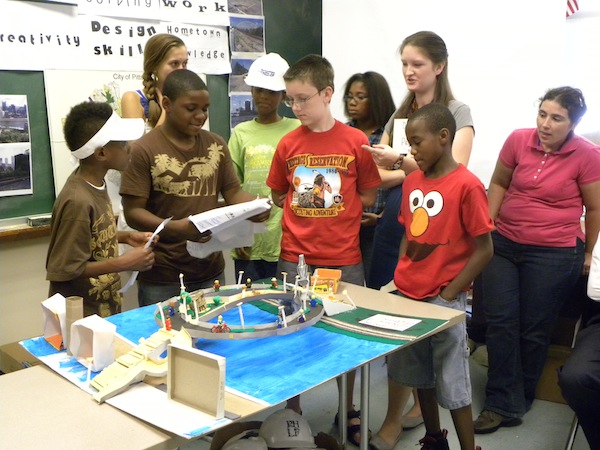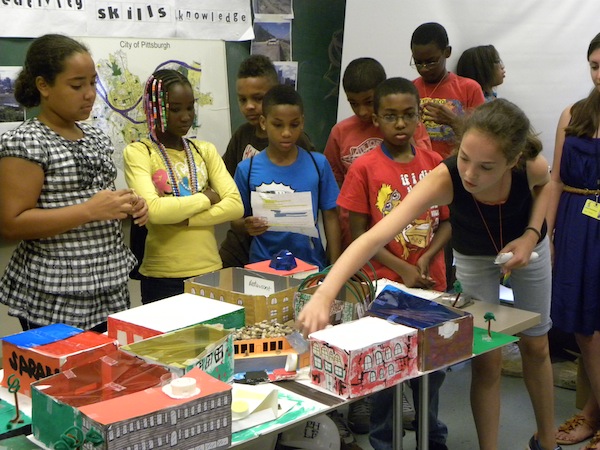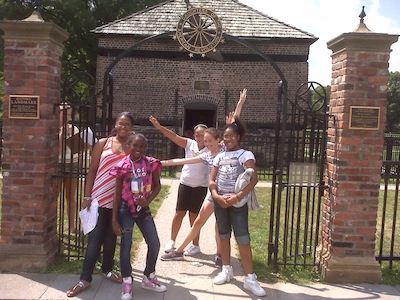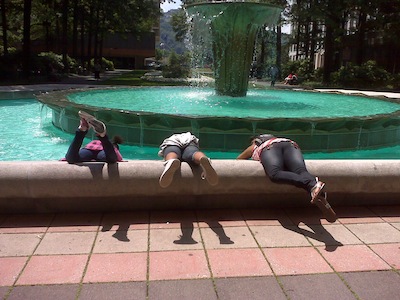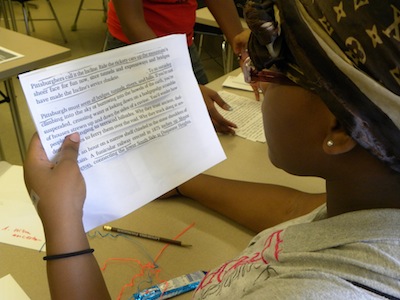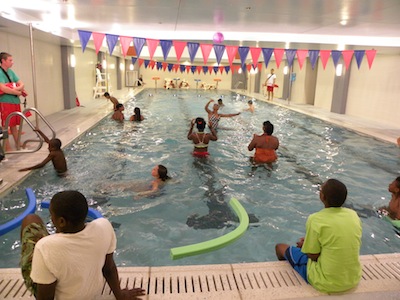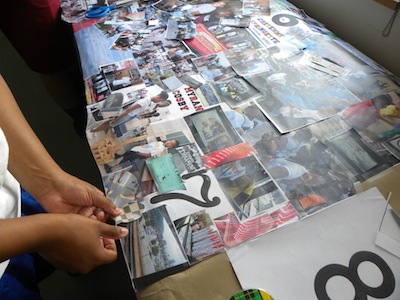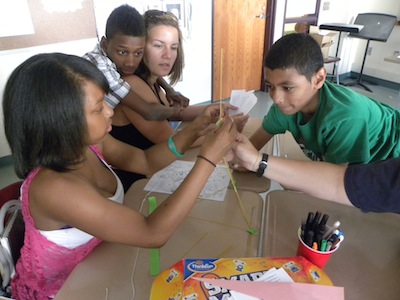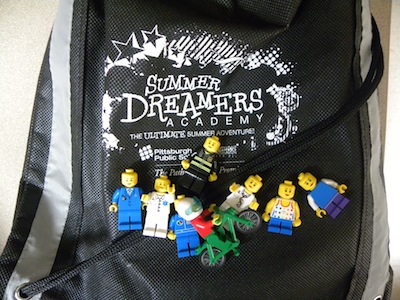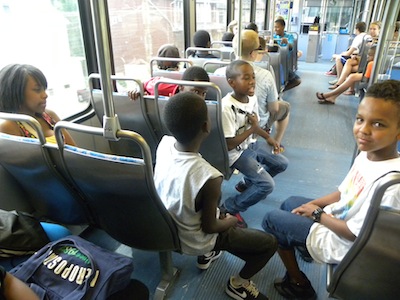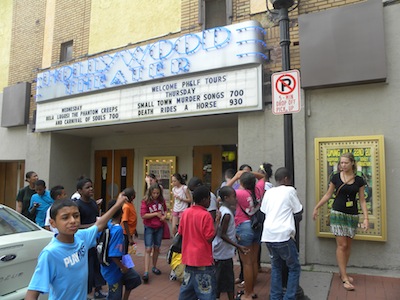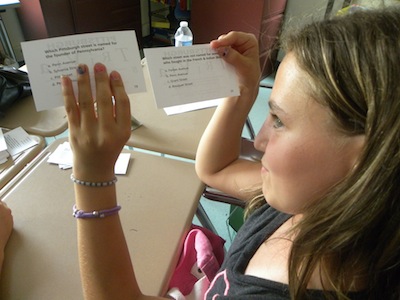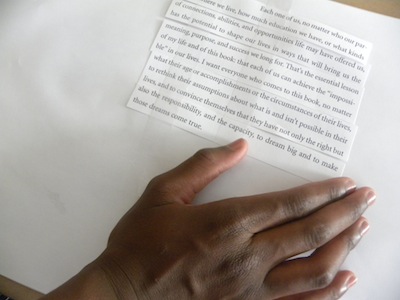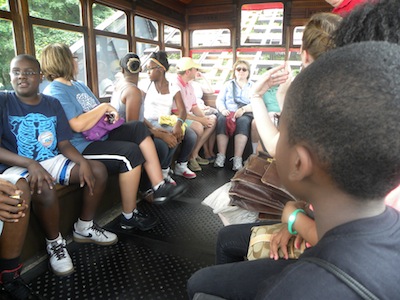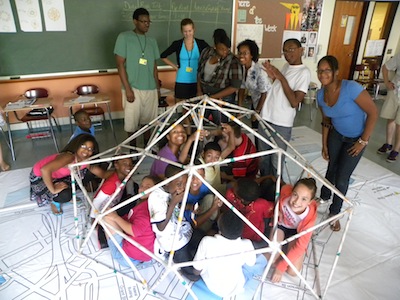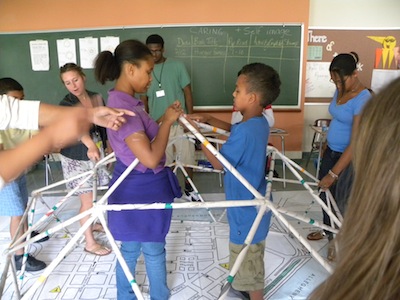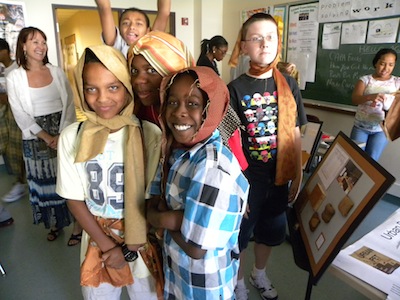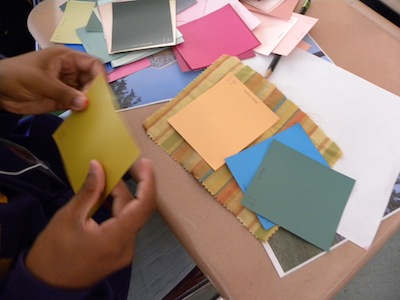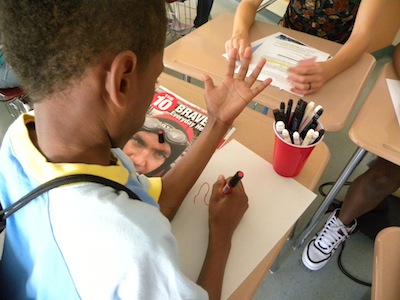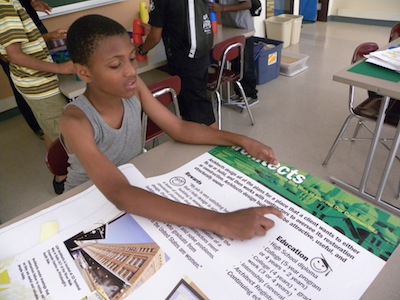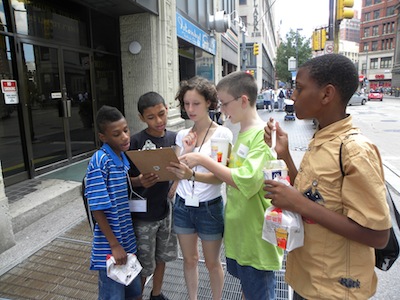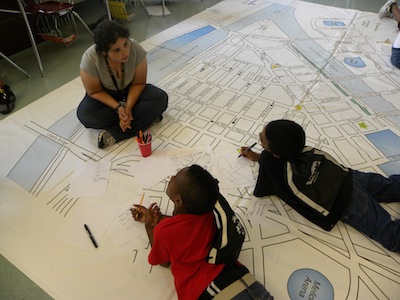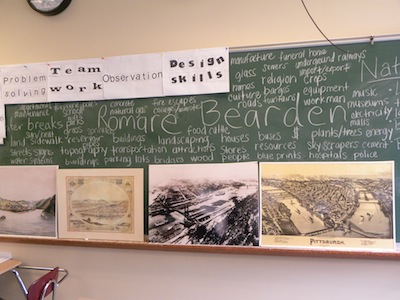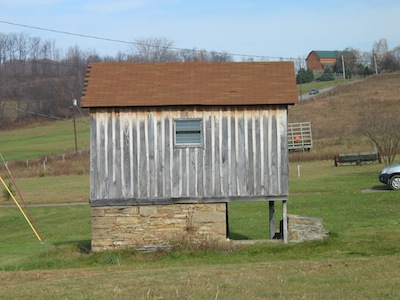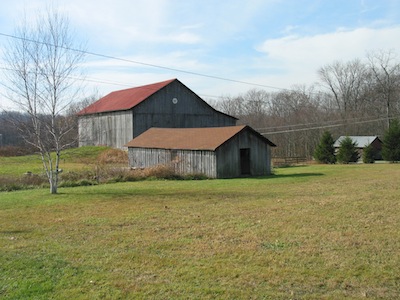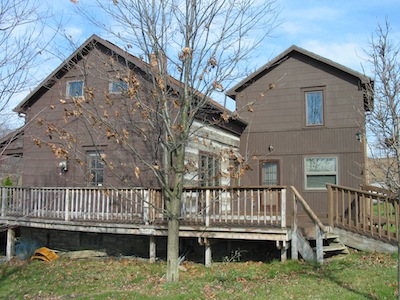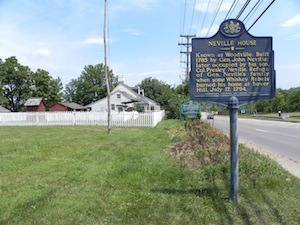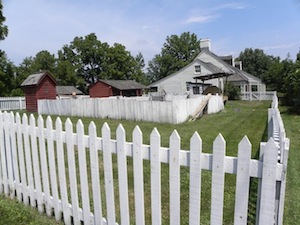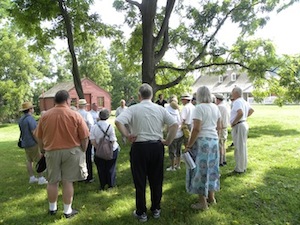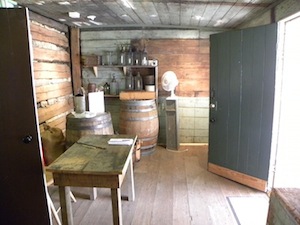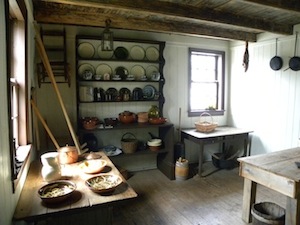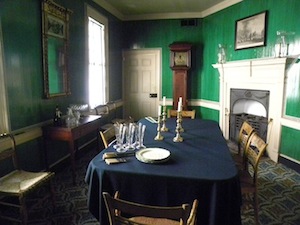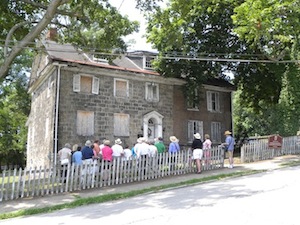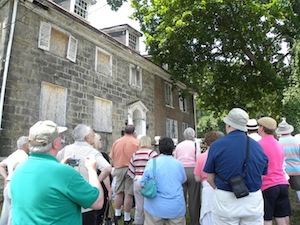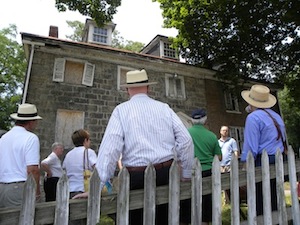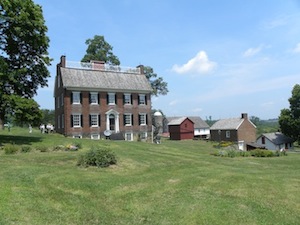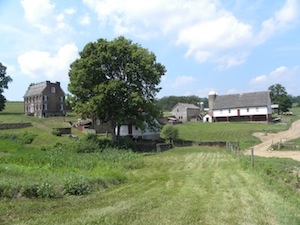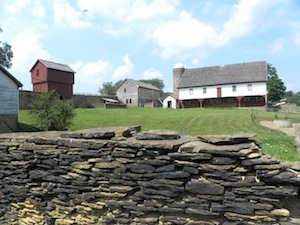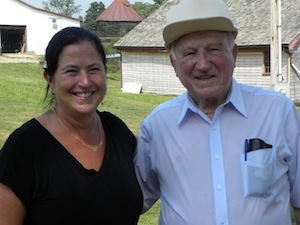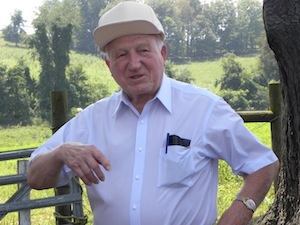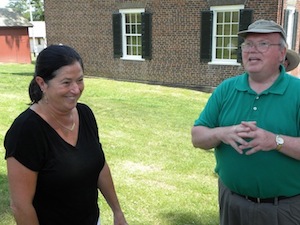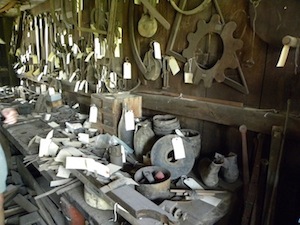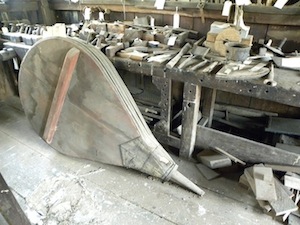
Category Archive: PHLF News
-
Historic John C. Plumer House Protected by Preservation Easement
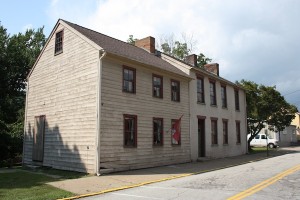 The Mon Valley Initiative (MVI) has donated a preservation easement to the Pittsburgh History & Landmarks Foundation to ensure the preservation and protection of the historic John C. Plumer House in West Newton, Pennsylvania, in Westmoreland County.
The Mon Valley Initiative (MVI) has donated a preservation easement to the Pittsburgh History & Landmarks Foundation to ensure the preservation and protection of the historic John C. Plumer House in West Newton, Pennsylvania, in Westmoreland County.Listed on the National Register of Historic Places in 1979, the original 2½-story frame house was completed in 1814 as the home of John Campbell Plumer and his new bride, Elizabeth Peaire. A brick addition was constructed in 1846.
A preservation easement is a voluntary legal agreement made between a property owner and a qualified preservation organization to protect the exterior of a historic site in perpetuity. It is recorded on the deed and filed in the Recorder of Deeds office. This easement would not have been possible without the partnership of a number of parties and a timely phone call.
“About a year ago, Ben Markle, president of the West Newton Historical Society, notified us that there was a possibility that the Plumer House might be demolished,” said PHLF President Arthur Ziegler. “When we contacted the Borough of West Newton, the owner of the property, we learned they were open to preserving the property if they could relinquish their ownership of it.”
Knowing how important the Plumer House could be to the economic revitalization of the Borough, PHLF began working with Downtown West Newton, Inc., a local non-profit group dedicated to the improvement of West Newton’s Main Street District. The organization already had a project underway with MVI. This project was a focused marketing initiative to promote the economic growth of West Newton.
These two organizations had local connections and a deep understanding of the community’s real estate market, which allowed for a strong partnership between all of the groups involved. Because of this, PHLF elected to work with MVI rather than accept a donation of the property.
“It couldn’t have worked out better,” says George Molovich, president of the West Newton Borough Council. “After learning more about preservation easements and reviewing our options, Council decided to convey the property to MVI on the condition that they donate and endow a preservation easement to PHLF and use the Plumer House to stimulate economic development.”
To help the process, PHLF deferred MVI’s contribution to endow annual monitoring costs to assure compliance with the terms of the easement and will assist MVI in marketing the Plumer House to a new owner.
“This undertaking is a wonderful example of what happens when there is an excellent relationship between an involved local Community Development Corporation, a supportive local government and strong non-profits,” says MVI Senior Real Estate Developer Patrick Shattuck. “A year ago, there was a chance that this one-of-a-kind property might be lost. Now, it is an important part of our strategic revitalization strategy for West Newton and is already attracting outside interest to this vibrant community.”
Under the easement terms, MVI and future Plumer House owners will continue to be responsible for the maintenance and upkeep of the house, and PHLF will be responsible for monitoring the property on at least an annual basis in perpetuity to assure compliance with the conditions of the easement. No changes can be made to the exterior of the building without PHLF’s prior approval and any changes should conform to the United States Secretary of the Interior’s Standards for Rehabilitation.
While granting a preservation easement on a historic property limits what an owner may do with the exterior of that property, granting the easement provides several benefits. The first and most obvious is that the property owner has protected the historic property in perpetuity from destruction, inappropriate alteration, or development of its land. Another is that an individual or corporate easement donor may be entitled to claim a federal charitable contribution tax deduction equal to the value of the preservation easement if certain conditions are met.
For example, without the federal charitable contribution deduction and rehabilitation tax credits associated with the restoration of historic properties, projects like the Bedford Springs Resort in Bedford, PA, and the Heinz Lofts and Armstrong Cork Factory Apartments in Pittsburgh, PA, might never have been developed. A charitable contribution deduction was not associated with the Plumer transaction, however, since the donor was a non-profit organization.
PHLF holds nearly 50 preservation easements and deed restrictions on Western Pennsylvania properties, and will announce another one on September 14 during its annual donor recognition event.
Pittsburgh History & Landmarks Foundation is a 501(c)(3) non-profit organization founded in 1964 whose mission is to identify and save historically significant places; revitalize historic neighborhoods; preserve historic farms and historic designed landscapes; and educate people about the Pittsburgh region’s rich architectural heritage. More information can be found at www.phlf.org.
The Mon Valley Initiative is a non-profit community and economic development coalition currently comprised of 10 Community Development Corporations whose mission is to work together to unite communities and restore the economic vitality of the Mon Valley. Downtown West Newton, Inc., is one of the member CDCs. More information can be found at www.monvalleyinitiative.com.
HISTORIC SIGNIFICANCE OF THE PROPERTY
Born in 1788, John C. Plumer was an important pioneer who spent the early part of his life trading in commodities necessary to frontier life. Upon his return from serving in the War of 1812, he was elected captain of a troop of Pennsylvania militia cavalry raised in Fayette and Westmoreland Counties and served a term of seven years.
He was active in many phases of community life. He bought a gristmill and saw mill from his brother and grew the business into one of the largest in the area. He also purchased a mill on Sewickley Creek and built a dam across the Youghiogheny River to furnish the power. Navigation was kept open by means of a lock. When a toll bridge was built to replace the ferry at nearby West Newton, Plumer supervised its construction and was a principal stockholder.
A follower of Andrew Jackson, Plumer was elected to the State Legislature in 1830 and the State Senate in 1839. Locally, he served as a Justice of the Peace and pioneered the movement for a free school system. Retiring from business in 1866, he died July 18, 1873.
-
Grant Doubles Historic Religious Property Total
Contributions Welcome Through December
“We are most grateful to the Katherine Mabis McKenna Foundation for awarding a $10,000 grant to support PHLF’s Historic Religious Property Program,” said HRP Chair George Dorman. “The Foundation has been a strong supporter of our HRP program for many years, and, as a result, we have been able to consistently provide matching grants and technical assistance to more than 100 historic worship sites in Allegheny County that are centers of art, culture, and community.”
He added, “The McKenna Foundation gift is a wonderful boost for our 2011 Historic Religious Properties fundraising campaign. Many, many thanks from PHLF, its HRP Committee, and especially from the worship sites that will benefit from this generous contribution!”
This generous grant, combined with gifts from 85 PHLF members and friends, brings our fundraising total in 2011 to $21,595. Our goal is to raise at least $50,000 this year so we can offer another round of matching grants in 2012 and begin building a $2.5 million endowment to generate $100,000 in annual income to underwrite our HRP program.
“We have four months to achieve our goal,” said Jack Miller, Director of Gift Planning, “and know that many congregations are counting on our success. They are beginning to prepare proposals to submit to our Historic Religious Properties Committee for consideration in January 2012.”
Please add your gift by clicking here and by directing your tax-deductible contribution to “Historic Religious Properties.” The success of our 2011 Annual Appeal will determine how many grants we will be able to award in 2012 to support critical restoration efforts at various historic religious properties in Allegheny County.
To learn more, please contact Jack Miller at 412-471-5808, ext. 538 or jack@phlf.org or click here to read our 2011 appeal letter.
-
Campers Present 3-D Models and CampDEC Adventure Book
Twenty-three middle school students participated in PHLF’s CampDEC (Design Explore Create) at CAPA from July 11 to August 10, offered as part of the Pittsburgh Public School’s Summer Dreamers Academy. The last two days were a double celebration: campers presented two 3-D models they created during the camp and a book about their adventure to a group of architects, parents, and PHLF members; and they participated in a Literacy Olympics on the rooftop of CAPA!
PHLF thanks the Pittsburgh Public Schools for offering Summer Dreamers for a second consecutive year and for including CampDEC as one of the afternoon activities. PHLF also thanks the Alfred M. Oppenheimer Memorial Fund of The Pittsburgh Foundation, McSwigan Family Foundation, and PHLF member Russell W. Coe for helping underwrite the cost of designing and printing CampDEC Adventure. Each camper received a copy of the full-color, 42-page book containing camper artwork, photographs, comments, and lessons learned.
What did they the campers most like about CampDEC? Their answers include the following:
- Building a model of the “Promise Bridge” on the old Wabash Bridge piers.
- Building some new attractions for one of the parking lots at Station Square, complete with a kids’ club, picnic area, shops, restaurants, and a train whistle and train ride.
- Traveling around the city on Molly’s Trolleys.
- Riding the inclines and taking the “T” to Dormont to watch cartoons in the beautifully restored Hollywood Theater.
- Exploring Pittsburgh on scavenger hunts and stopping for snacks!
- Making friends with the campers and counselors.
- Learning about our city’s proud history.
- Learning how to have fun, how to look at things differently, and how to try new things.
- Swimming in the new downtown YMCA pool, kayaking on the Allegheny, and bike riding on the North Shore.
- Making stained glass, gumdrop towers, a recycled art project, and our book, CampDEC Adventure.
-
Summer Dreamers Discover Downtown History
By Jasmine Fletcher and CampDEC campers/counselors
Pittsburgh has a lot of art and interesting buildings and places that people usually just pass by without noticing. That’s what 23 CampDEC (Design Explore Create) campers discovered during five downtown scavenger hunts. We were part of the Pittsburgh Public School’s Summer Dreamers Academy; the Pittsburgh History & Landmarks Foundation planned our afternoon camp from July 11 to August 10. We discovered Pittsburgh, not just as a city, but as a historic place.
Street names like Fort Pitt Boulevard and Fort Duquesne Boulevard clue you into the fight between the British and French in the 1750s for control of the land at the forks of the Ohio River. We even found French Street right near CAPA, where CampDEC was located. Forbes Avenue is named for the British General John Forbes who took control of this region from the French in 1758 and named Pittsburgh for William Pitt, the British statesman who planned the winning military strategy. Stanwix Street is named for the British general who oversaw construction of Fort Pitt, completed in 1761. Wood Street is named for one of the surveyors from Philadelphia who laid out the streets in 1784, at the request of the Penn family. The Boulevard of the Allies honors the soldiers who fought in World War 1. We were truly walking on history as we explored downtown.
We discovered the meanings of many different statues, murals, and sculptures. One of our favorite sculptures is on the corner of Seventh Street and Fort Duquesne Boulevard. It’s made out of all the different bridges in downtown Pittsburgh. Another favorite sculpture is the jazz musicians and dog on Liberty Avenue, across from the August Wilson Center for African American Culture. The mural of the two Andy’s on Smithfield Street near Strawberry Way is the weirdest thing many of us saw. PNC’s living wall at Fifth Avenue and Wood Street was voted the most favorite mural by CampDEC campers.
The most colorful building exterior in downtown Pittsburgh is Nola restaurant in Market Square. (CAPA, the Harris Theater, and Theater Square also have colorful exteriors.) The longest escalator, although it was being repaired, is in One Oxford Centre. The building with the most arches is the Allegheny County Courthouse. The following buildings got votes for the most spectacular interiors: Union Trust, Point Park University Center, Omni William Penn Hotel, Renaissance Pittsburgh Hotel, and PPG’s Wintergarden, where Santa Claus’ from around the world are exhibited in the winter.
Our favorite water feature is the fountain in PPG Place and our favorite green space/open space is Mellon Green on Grant Street. The corner parklet has beautiful landscaping and a dramatic fountain in the center. For the best soft serve ice cream in downtown Pittsburgh, go to a sea-creature’s house in a square, or find where a “world” and a “strawberry” survive near “Smith’s field.”
We noticed some unusual things, too. There are fake Magnolia trees across from a plaza with “eyeball” benches. There is a “B Street” in Pittsburgh––but we never found an “A” Street. The City-County Building includes a statue of William Pitt, a plaque with all the words of the Gettysburg Address, and a painting of Abraham Lincoln holding the Emancipation Proclamation, plus elevator doors that illustrate our city halls and courthouses.
We would go out on days that were “hot enough to fry an egg on the sidewalk,” according to Caquan, because we were really determined to understand the history behind the city we lived in. We went out there to get connected to the city, to get deep into the history behind the famous “steel city.” Knowing more about the city makes us care about it more.
When we leave CampDEC, we will leave with a tremendous amount of knowledge. And, we’ll never just walk down a street again without noticing, looking up, finding “scars” that show how a building has changed over time, and reading the names of places and streets to figure out their meaning for Pittsburgh. We have learned to really evaluate what’s built because even the simplest details have a history behind them. Downtown Pittsburgh is a great place for scavenger hunts and explorations.
-
Antiques Show this Sunday at Woodville Plantation
The Woodville Plantation Antiques Show & Sale will be held this Sunday, (August 21) from 10am to 4pm at the Neville House Museum in Bridgeville, Pennsylvania.
Admission is $3 and house tours will be available.
The show will feature more than 20 diversified antique dealers in an outdoor setting adjacent to the Neville House, the restored home of John and Presley Neville, two of some of Western Pennsylvania’s most influential figures.
The Neville House at Woodville Plantation is located at 1375 Washington Pike, Bridgeville, PA 15017.
Directions: Take exit 55 on I-79 (Heidelberg/Kirwan Heights) turn left (north) at the traffic light onto Rt. 50 Washington Pike and proceed a quarter mile. Neville House will be on the left.
For more information contact show managers John Kroeck or John Mickinak at 412-741-1631 or 724-832-7388
-
PHLF CampDEC for Pittsburgh Public Schools Summer Dreamers Academy
For the second summer, PHLF’s education staff and college interns are involving more than 20 middle school students in CampDEC (Design Explore Create). CampDEC is offered as an afternoon activity at CAPA, as part of the Pittsburgh Public Schools’ Summer Dreamers Academy. Twenty-three campers are exploring downtown Pittsburgh on foot, as they find answers to five Scavenger Hunts. In addition, they are swimming in the new indoor PNC YMCA pool on Fifth Avenue, biking along the North Shore, and kayaking in the Allegheny. Last week, they rode the T to Dormont to watch cartoons in the restored Hollywood Theater!
Campers have been introduced to the professions of architecture, engineering, urban planning, interior design, and landscape design so far, and one camper has written a letter to the Mayor asking him if it would be possible to build his design for “Piano Park.”
In terms of designing and creating, campers are creating a book, CampDEC Adventures 2011, and they are designing and building two models. One will show how a pedestrian bridge can be built on the historic Wabash Bridge piers, thus connecting downtown Pittsburgh and Station Square. The other shows how part of a parking lot at Station Square can be turned into a museum, picnic area, and garden.
Campers present their book and models on the last day of camp––August 10––at CAPA in the afternoon. If any PHLF members would like to come to see the presentations, you are welcome to do so. Please contact Louise Sturgess for details.
-
Historic Roaring Run Farm on the Market (SOLD)
SOLD
In 2004, PHLF accepted a donated preservation easement on Roaring Run Farm located at 276 Roaring Run Road in Champion, PA. Now, the owner of the 52-acre farm that dates back to the early 19th century is hoping a preservation-minded person will become its new owner.The property is located just a few miles from Seven Springs and the Donegal Exit of the Pennsylvania Turnpike, less than an hour from Pittsburgh. It includes a 1,600 square-foot house with three bedrooms, a separate double garage, a 40 x 50-foot bank barn and springhouse and is adjacent to a nature preserve and conservation district with an amazing view of the Laurel Highlands.
Persons interested in exploring the possibility of purchasing the farm are invited to contact Jeremiah T. O’Shea at 412-400-3371 or rorrunjto@yahoo.com. The asking price is $199,000.
-
Touring Western Pennsylvania’s Most Historic Homes
On July 23, a busload of PHLF members visited three of Western Pennsylvania’s most historic homes, all of which have survived to the present day due in part to PHLF’s help. The first stop was Woodville Plantation, the c. 1775 John and Presley Neville house in Collier Township, where PHLF Trustee Anne Genter, along with Rob Windhorst and Jim Galbraith of Neville House Associates, escorted the group on a tour of the beautifully restored and furnished Virginian vernacular house. Woodville is one of only 10 National Historic Landmarks in Allegheny County.
After lunch, the group traveled to Canonsburg where architect Jonathan Glance described the first phase of restoration plans for the John Roberts House, begun as a log house in 1798, and being transformed into an arts center by the Washington County Cultural Trust. The 1809 stone and 1840 brick portions of the house face North Central Avenue.
The trip concluded with a visit to “Plantation Plenty,” the Isaac Manchester Farm in Avella, Washington County, where Eugene Painter, a descendent of one of the members of the Lewis and Clark Expedition and Margie Manchester Pagliarulo, an eighth-generation descendent of Isaac Manchester, shared the rich history of the 215-year-old farm.
“It was great to show our friends how preservation tools like easements and planned gifts are helping to save these national treasures,” said Gift Planning and Easement Director Jack Miller. “Hopefully, our members will spread the word on what they learned and encourage more people to consider similar preservation strategies.”
Click on any of the pictures for a gallery slideshow of the tour.


